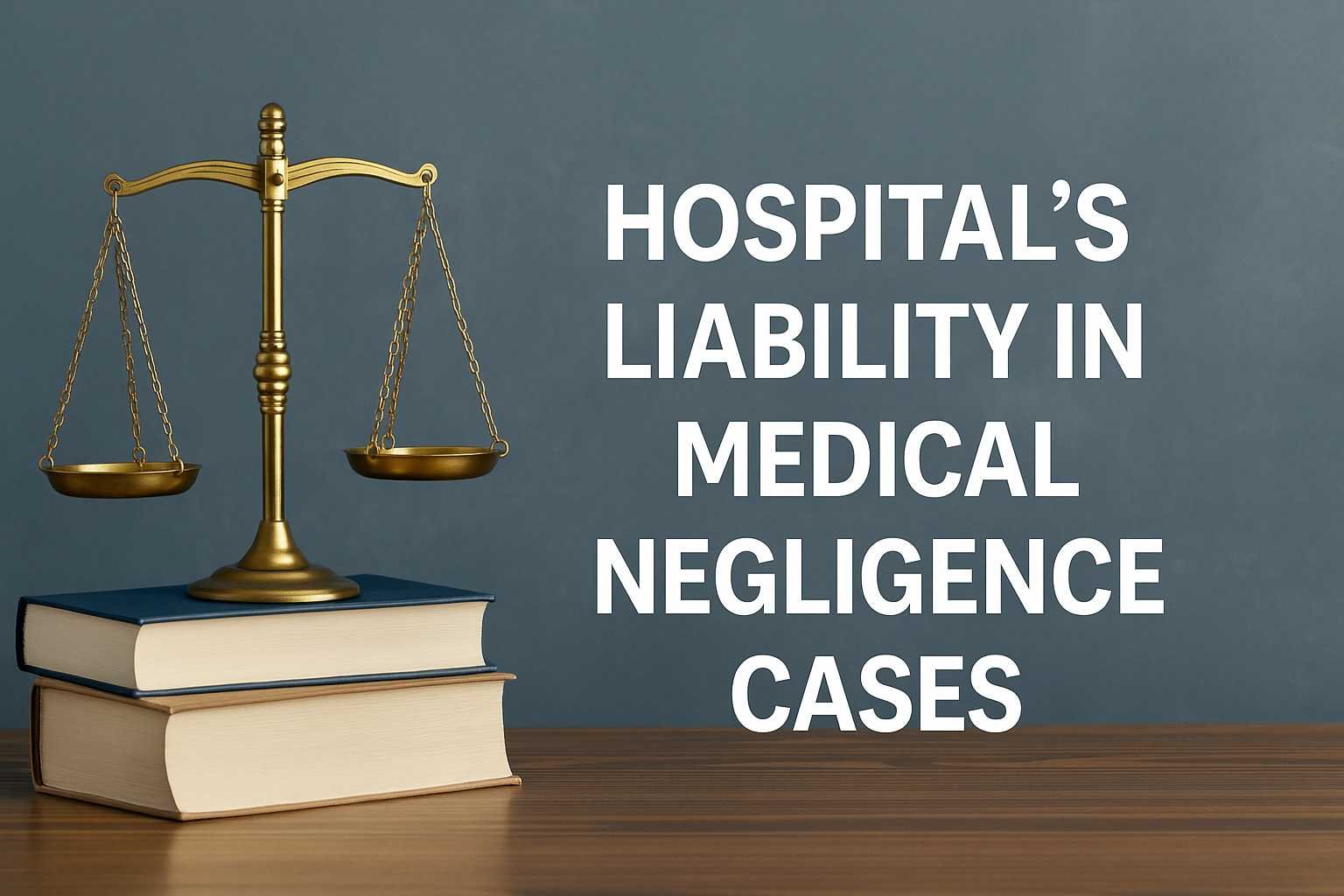On this page you will read detailed information about Examining Medical Malpractice in the United States.
As a patient seeking medical care in the United States, you place your trust in healthcare professionals to provide competent treatment. However, medical errors and negligence remain an unfortunate reality in the American healthcare system. Understanding medical malpractice – its prevalence, causes, and legal implications – is crucial for protecting your rights and well-being. This article examines the complex landscape of medical malpractice in the U.S., exploring its impact on patients, providers, and the broader healthcare industry. You’ll gain insight into common types of malpractice, steps for prevention, and the process of seeking justice when errors occur. By educating yourself on this critical issue, you can become a more informed and empowered healthcare consumer.
Understanding Medical Malpractice in the US
Medical malpractice in the United States is a complex issue that affects patients, healthcare providers, and the entire healthcare system. To grasp its significance, it’s essential to understand what constitutes medical malpractice and its implications.
Definition and Scope
Medical malpractice occurs when a healthcare professional deviates from the accepted standard of care, resulting in harm to the patient. This can include errors in diagnosis, treatment, aftercare, or health management. In the United States, medical malpractice cases are governed by state laws, which can vary significantly across the country.
Common Types of Medical Malpractice
Some frequent forms of medical malpractice include:
- Misdiagnosis or delayed diagnosis
- Surgical errors
- Medication mistakes
- Birth injuries
- Anesthesia errors
Legal and Financial Implications
Medical malpractice in the United States has far-reaching consequences. For patients, it can lead to severe health complications, additional medical expenses, and lost wages. Healthcare providers may face legal action, damage to their reputation, and increased insurance premiums. The healthcare system as a whole bears the burden of rising malpractice insurance costs and defensive medicine practices, which can drive up overall healthcare expenses.
Understanding these aspects is crucial for both patients and healthcare professionals to navigate the complex landscape of medical malpractice in the United States.
Common Types of Medical Malpractice Claims
Medical malpractice in the United States encompasses a wide range of negligent actions by healthcare providers. Understanding the most prevalent types of claims can help patients recognize potential issues and seek appropriate legal recourse when necessary.
Misdiagnosis or Delayed Diagnosis
One of the most common forms of medical malpractice involves errors in diagnosis. This can include failing to identify a condition, misidentifying an illness, or delaying a crucial diagnosis. Such mistakes can lead to improper treatment, worsened health outcomes, and in severe cases, preventable deaths.
Surgical Errors
Surgical malpractice claims often arise from mistakes made during operations. These may include performing the wrong procedure, operating on the incorrect body part, or leaving surgical instruments inside a patient. Post-operative care errors, such as failing to monitor for complications, also fall into this category.
Medication Errors
Prescription-related malpractice is another significant concern in the United States healthcare system. This can involve prescribing the wrong medication, incorrect dosages, or failing to account for harmful drug interactions. Pharmacists and nurses can also be liable if they make errors in dispensing or administering medications.
Birth Injuries
Obstetrical malpractice claims often result from injuries sustained during pregnancy, labor, or delivery. These may include failure to diagnose maternal health conditions, improper use of delivery tools, or delayed C-section procedures when necessary.
Proving Medical Negligence: The Legal Process
Demonstrating medical malpractice in the United States requires a thorough understanding of the legal process. To successfully prove negligence, you must establish four key elements: duty, breach, causation, and damages.
Establishing Duty of Care
The first step is to show that a doctor-patient relationship existed, creating a duty of care. This relationship typically begins when a physician agrees to treat you or provide medical advice.
Proving Breach of Standard
Next, you must demonstrate that the healthcare provider breached the standard of care. This involves showing that their actions deviated from what a reasonably competent medical professional would have done in similar circumstances.
Demonstrating Causation
You must then prove that the breach directly caused your injury or harm. This often requires expert testimony to establish a clear link between the healthcare provider’s negligence and your damages.
Quantifying Damages
Finally, you need to document and quantify the damages you’ve suffered. This may include medical bills, lost wages, pain and suffering, and other related costs.
Navigating the complexities of medical malpractice in the United States often requires the expertise of specialized attorneys and medical experts. They can help gather evidence, interpret medical records, and build a strong case to support your claim of negligence.
In the previous post, we had shared information about Federal drug policy of the United States, so read that post also.
Navigating the Medical Malpractice Insurance Landscape
Understanding medical malpractice insurance is crucial for healthcare providers in the United States. This coverage protects professionals from financial ruin in case of lawsuits alleging negligence or errors in patient care.
Types of Coverage
Medical malpractice in the United States typically falls under two main policy types:
- Claims-made policies: Cover incidents that occur and are reported while the policy is active.
- Occurrence policies: Provide coverage for any incident that occurred during the policy period, regardless of when it’s reported.
Factors Affecting Premiums
Several elements influence the cost of malpractice insurance:
- Specialty: High-risk specialties like neurosurgery often face higher premiums.
- Location: Rates vary by state due to differing laws and litigation climates.
- Claims history: Previous malpractice claims can significantly impact future premiums.
Risk Management Strategies
Implementing robust risk management practices can help reduce the likelihood of malpractice claims and potentially lower insurance costs. These may include thorough documentation, clear communication with patients, and ongoing professional education.
By understanding these key aspects of medical malpractice insurance, healthcare providers can better protect themselves and their practices while navigating the complex healthcare landscape in the United States.
Strategies for Preventing Medical Malpractice
Implement Robust Communication Protocols
Effective communication is paramount in preventing medical malpractice in the United States. Healthcare providers should establish clear, standardized protocols for patient handoffs, test results, and treatment plans. Utilizing electronic health records (EHRs) can significantly reduce errors caused by miscommunication or illegible handwriting.
Prioritize Continuing Education
Staying current with the latest medical advancements and best practices is crucial. Hospitals and clinics should mandate regular training sessions and workshops for their staff. This ongoing education helps minimize the risk of outdated procedures leading to malpractice claims.
Enhance Patient Involvement
Encouraging patients to actively participate in their healthcare decisions can help prevent misunderstandings and errors. Provide clear, accessible information about treatments, medications, and potential risks. Implement a system for patients to ask questions and voice concerns, fostering a culture of open dialogue and shared responsibility.
Conduct Regular Audits and Reviews
Implementing a system of periodic audits and peer reviews can help identify potential issues before they escalate. These reviews should examine adherence to protocols, accuracy of diagnoses, and appropriateness of treatments. By proactively addressing concerns, healthcare providers can significantly reduce the likelihood of medical malpractice incidents occurring.
Conclusion
As you consider the complex issue of medical malpractice in the United States, it’s clear that finding a balanced approach is crucial. While patients deserve protection and recourse for genuine negligence, the current system also creates challenges for healthcare providers. Moving forward, it’s important to explore reforms that can reduce frivolous lawsuits and excessive awards while still ensuring justice for those harmed by malpractice. By implementing evidence-based practices, improving communication between doctors and patients, and refining the legal process, you can help create a system that better serves all stakeholders. Ultimately, addressing medical malpractice effectively will require ongoing dialogue, collaboration, and a commitment to both patient safety and a sustainable healthcare system.
Disclaimer
The information and services on this website are not intended to and shall not be used as legal advice. You should consult a Legal Professional for any legal or solicited advice. While we have good faith and our own independent research to every information listed on the website and do our best to ensure that the data provided is accurate. However, we do not guarantee the information provided is accurate and make no representation or warranty of any kind, express or implied, regarding the accuracy, adequacy, validity, reliability, availability, or completeness of any information on the Site. UNDER NO CIRCUMSTANCES SHALL WE HAVE ANY LIABILITY TO YOU FOR ANY LOSS OR DAMAGE OF ANY KIND INCURRED AS A RESULT OR RELIANCE ON ANY INFORMATION PROVIDED ON THE SITE. YOUR USE OF THE SITE AND YOUR RELIANCE ON ANY INFORMATION ON THE SITE IS SOLELY AT YOUR OWN RISK. Comments on this website are the sole responsibility of their writers so the accuracy, completeness, veracity, honesty, factuality and politeness of comments are not guaranteed.
So friends, today we talked about Examining Medical Malpractice in the United States, hope you liked our post.
If you liked the information about Examining Medical Malpractice in the United States, then definitely share this article with your friends.








